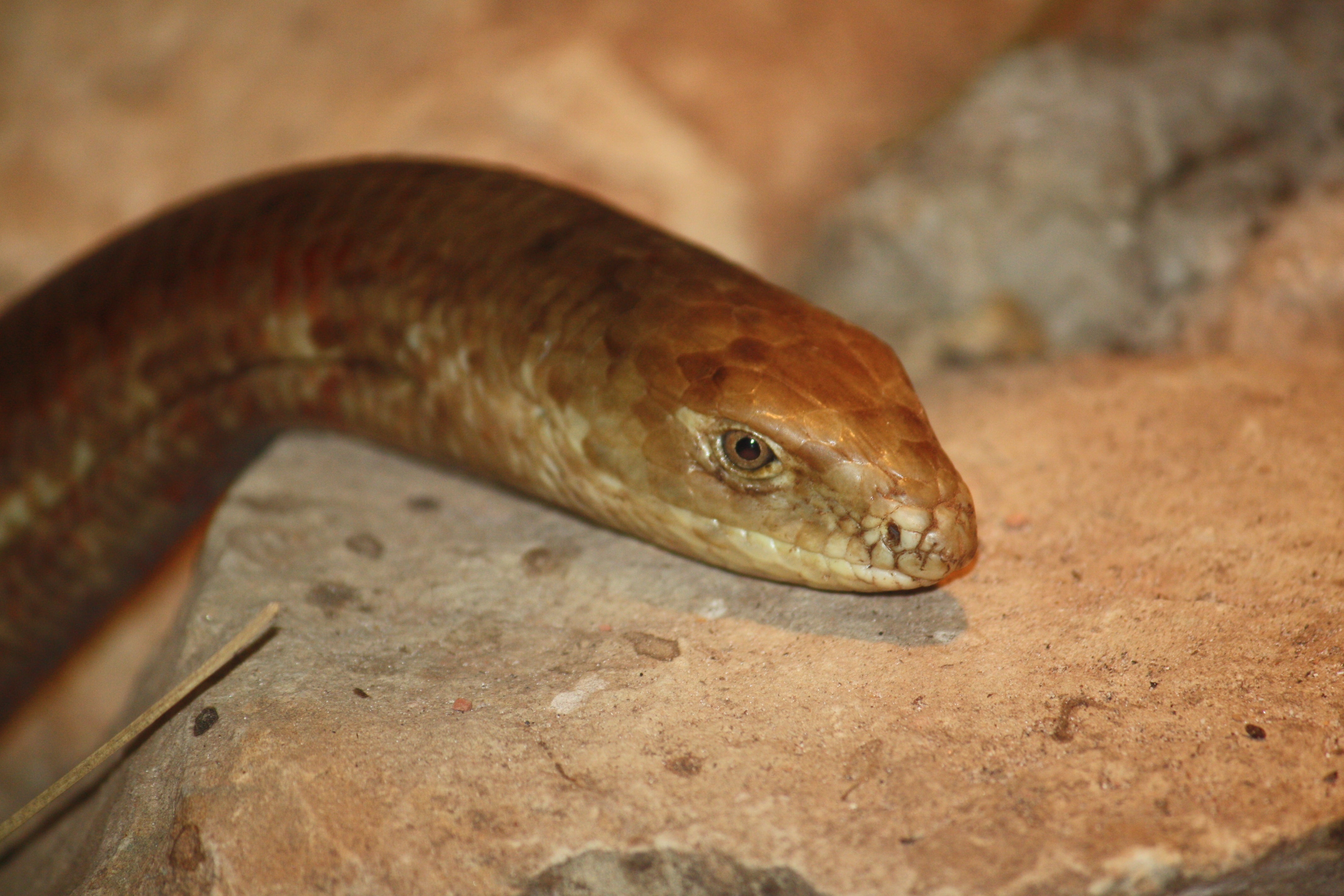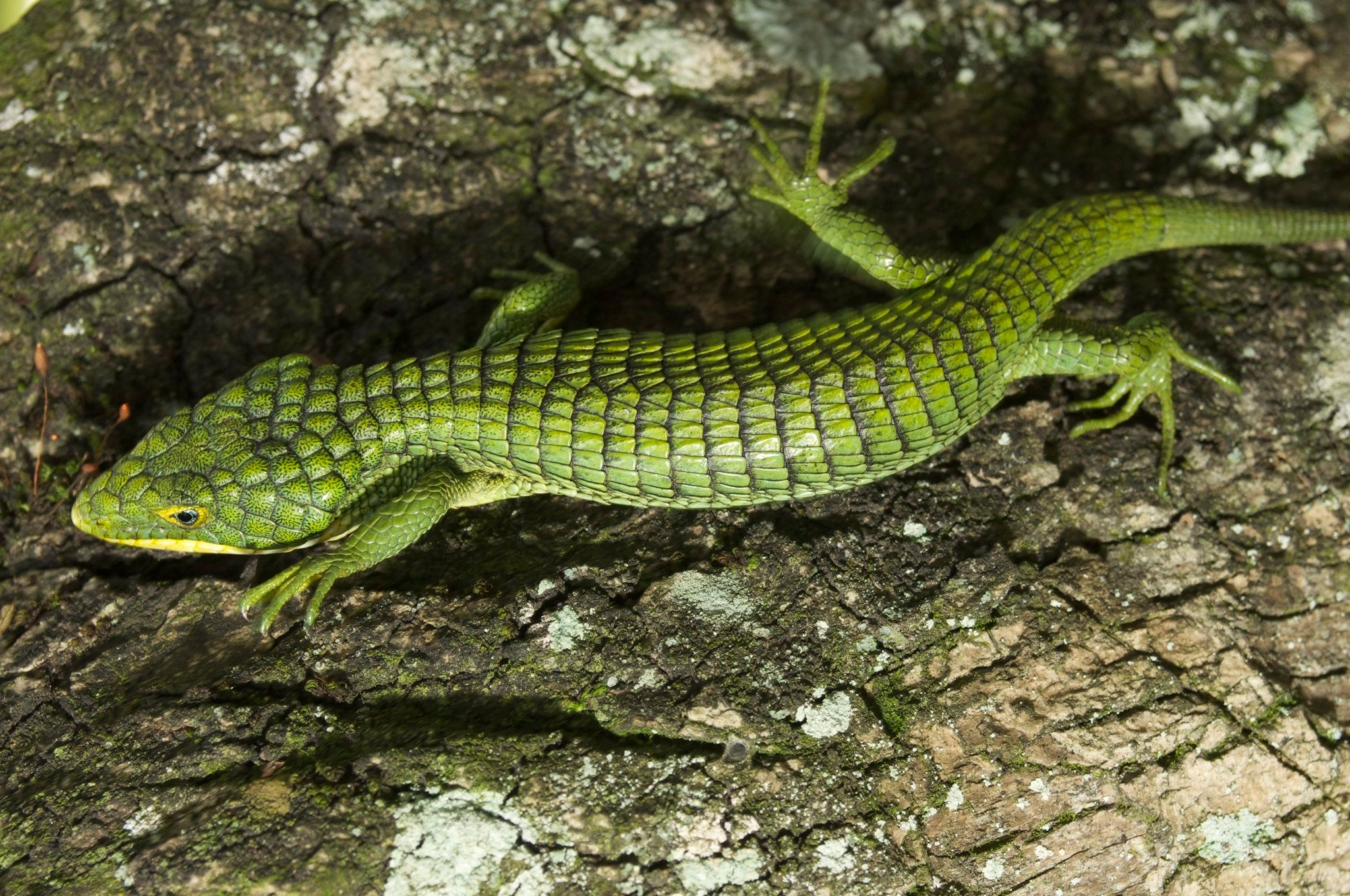Lined geckos (Gekko vittatus) are medium-large, nocturnal, arboreal lizards native to Indonesia and Papua New Guinea. They generally inhabit tropical rainforest, but are known to occasionally inhabit local human homes as well.
Lined geckos are generally 8-10” long, with a triangular head, round eyes, vertical pupils, slender elongated body, sticky toe pads, and a slender tapered tail. Coloring is tan to dark brown with a distinctive white stripe that starts behind both eyes, merges at the neck, and then continues along the spine until the base of the tail, which has white bands instead.
Although similar to tokay geckos in many ways, lined geckos are generally considered less aggressive, and may tame down more easily when born in captivity. With good care, this pet can live up to 10 years.
How much space do lined geckos need?
As large, active geckos, lined geckos need an enclosure that accommodates their needs. The absolute minimum enclosure size for appropriately housing a single lined gecko is 18”L x 18”W x 36”H. Of course, larger is always better!
Cohabitation (keeping multiple lined geckos together) is not recommended.
Do lined geckos need UVB?
Because lined geckos are nocturnal, they can technically survive without UVB lighting as long as they get vitamin D3 from their food. However, installing appropriate UVB lighting as part of their setup is necessary for them to thrive in captivity, and is highly recommended.
The best UVB bulbs for lined geckos are:
- Zoo Med T8 Reptisun 10.0
- Arcadia ShadeDweller Pro Arboreal Kit
The basking branch should be 6-8” below the UVB lamp for best results. The UVB bulb should be housed in a reflective fixture and placed close to the heat lamp. UVB is blocked by glass and plastic, so you can’t give your gecko UVB by placing its terrarium in front of an open window. Also make sure that the fixture your UVB bulb is in does not have a clear plastic bulb cover.
Lights should be on for 12 hours/day, and don’t forget to change your UVB bulb every 6-12 months according to manufacturer recommendation!
What basking temperatures do lined geckos need?
Lined geckos should have a basking temperature between 88-90°F, as measured by a digital probe thermometer with the probe placed on the basking branch. There should be a cooler area in the lower regions of the enclosure between 75-80°F. Nighttime temps should not dip lower than 75°F.
Provide daytime heat for your gecko by imitating the sun with a low-wattage halogen heat lamp on one side of the enclosure. If it’s too hot, you will need to decrease the heat output with a plug-in lamp dimmer.
If nighttime heating is needed, use a heating device that does not produce light, such as a ceramic heat emitter (CHE). This should be connected to a thermostat to prevent it from getting too hot.
What humidity levels do lined geckos need?
Lined geckos need a high humidity environment for best health. Average daytime humidity should be 65-75%, with a spike up to 90-100% at night. Measure humidity levels with a digital probe hygrometer with the probe in the middle of the terrarium.
Misting your gecko’s enclosure with a sprayer every evening will help create the right humidity levels. If needed, you can mist the enclosure again in the morning. This practice also provides an important source of drinking water!
If you have difficulty maintaining high humidity levels, running a reptile humidifier intermittently through the night can help.
What substrate is good for lined geckos?
Although lined geckos spend very little time on the ground, substrate helps maintain humidity and also contributes to the enclosure’s overall attractiveness. It’s ideal to use a substrate that imitates the “substrate” that the reptile naturally lives on in the wild. For lined geckos, that means it should resemble tropical soil.
We recommend the following substrates for lined geckos:
Layering clean, chemical-free leaf litter on top of the substrate can also help with humidity.
Substrate should be at least 2” deep and completely replaced every 3-4 months. Remove poop and urates daily, along with contaminated substrate.
What décor can you use in a lined gecko terrarium?
It’s terribly boring for a reptile to be stuck in an enclosure with nothing in it except dirt. It doesn’t matter how big the enclosure is if you don’t put things in it for your pet to use and interact with. Lined geckos tend to appreciate a fairly densely planted enclosure with either live or artificial plants, which can make their terrarium a great piece of home decor!
Lined geckos are strictly arboreal, so at bare minimum, you will need a couple of branches for your gecko to climb on and some live or artificial foliage for it to hide in. However, it’s best to include other items, such as:
What do lined geckos eat?
Lined geckos are carnivorous, which means that they need to eat a variety of animal prey in order to get the nutrition that their bodies need. They mostly eat insects, but they are also known to take small lizards.
Juvenile lined geckos should be fed daily, while adults only need to be fed every other day. Offer juveniles as much as they will eat. Adults should be offered as much as they will eat in about 5 minutes.
Feeder insects for lined geckos: dubias, discoids, red head roaches, crickets, black soldier flies, hornworms, silkworms, mealworms
Pinky/fuzzy mice can be offered 1-2x/month. Feeder anoles and house geckos can also be offered. Crested gecko diet can be offered as an occasional treat.
Supplements
You will also need calcium and vitamin supplements to help prevent your gecko from developing a deficiency. We recommend Repashy Calcium Plus LoD, lightly dusted on all of your lizard’s feeder insects.
Water
Although your gecko will get most of its drinking water from daily mistings, it’s a good idea to also provide a wall-mounted water dish. Change the water daily and scrub the bowl with a reptile-safe disinfectant weekly, or whenever it becomes soiled.
Do lined geckos like to be handled?
Generally speaking, lined geckos are better display animals than a pet that you can hold regularly. Instead of interacting with your gecko by holding it, try hand-feeding it with a pair of feeding tweezers.
*This care sheet contains only very basic information. Although it’s a good introduction, please do further research with high-quality sources to obtain additional information on caring for this species.
"Lined Gecko (also called Skunk Gecko) Gekko vittatus" by brian.gratwicke is licensed under CC BY 2.0




Leave a comment
This site is protected by hCaptcha and the hCaptcha Privacy Policy and Terms of Service apply.